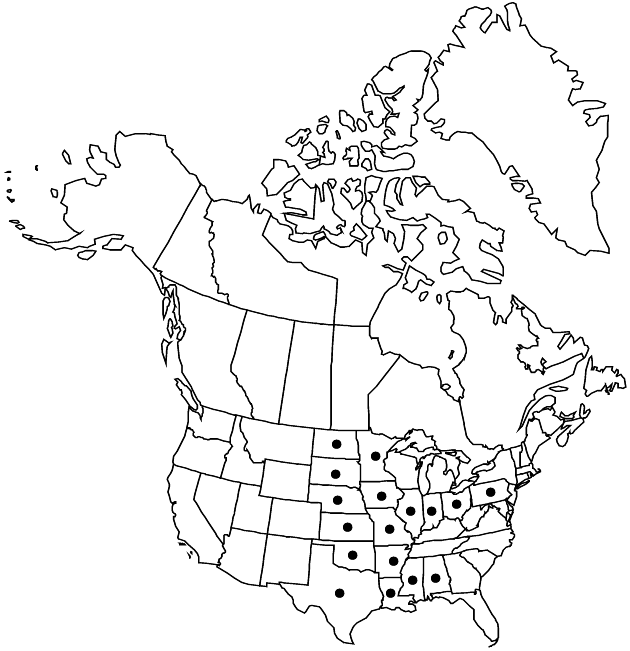Conyza ramosissima
Bull. Torrey Bot. Club 70: 632. 1943.
Plants spreading, 5–25+ cm, branched throughout (stems usually ± strigose). Leaves: faces closely strigose; proximal blades narrowly spatulate to linear, 5–15+ × 0.5–2 (–3+) mm; distal similar, smaller, narrower. Heads in loose, corymbiform arrays or borne ± singly. Involucres 3–4 mm. Phyllaries glabrous or glabrate; outer greenish to purplish, lanceolate, shorter, sparsely strigose; inner stramineous to purplish, linear-attenuate (more scarious). Receptacles 0.7–1 mm diam. in fruit. Pistillate florets 20–30; corollas ± equaling or surpassing styles, laminae 0.3–0.8 mm. Disc-florets 3–8. Cypselae pale tan, 1–1.5 mm, faces sparsely strigillose or glabrous; pappi of 20–30, tawny to pinkish bristles 2–2.5 mm. 2n = 18.
Phenology: Flowering late spring–early fall.
Habitat: Disturbed sites, usually in heavy clay soils
Elevation: 100–800 m
Distribution

Ala., Ark., Ill., Ind., Iowa, Kans., La., Minn., Miss., Mo., Nebr., N.Mex., N.Dak., Ohio, Okla., Pa., S.Dak., Tex., Wis.
Discussion
Selected References
None.